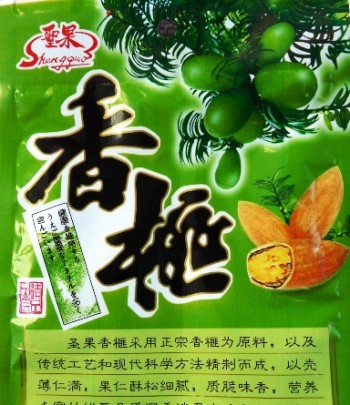
Torreya grandis, as described 1857 by John Lindley (1799 - 1865), in The Gardeners' Chronicle & Agricultural Gazette. Here he published the account of its earlier discovery by plant hunter Robert Fortune (1812 - 1880). Though already known and used by the Chinese for centuries, Fortune was the first European to discover it while exploring northeast Zhejiang province in search of seeds of Larix kaempferi. Initially he found only young, cultivated specimens of the Torreya, but was eventually guided to a valley of mature trees. He purchased seeds and sent them back to England. Common names for this species include Chinese nutmeg-yew and æ¦§æ ‘ (fÄ›i shù) in the Chinese language. The species name refers to the relatively large size of its seed cones.
Description. Chinese nutmeg-yew is an evergreen coniferous species of tree that will grow to mature heights of 80 feet (25 m) tall, with a dense crown, becoming broadly conical to domed and irregular with age.
Hardy to UDSA Zone 8 - cold hardiness limit between 10° and 20°F (-12.1° and -6.7°C).
Torreya grandis is an excellent timber tree and has been cultivated in China for centuries for its edible seeds (locally called xiangfei) and the medical and culinary oil from its arils (feishu). Culinary cultivars have been developed for those purposes and in some cases, they are cultivated like fruit trees.



